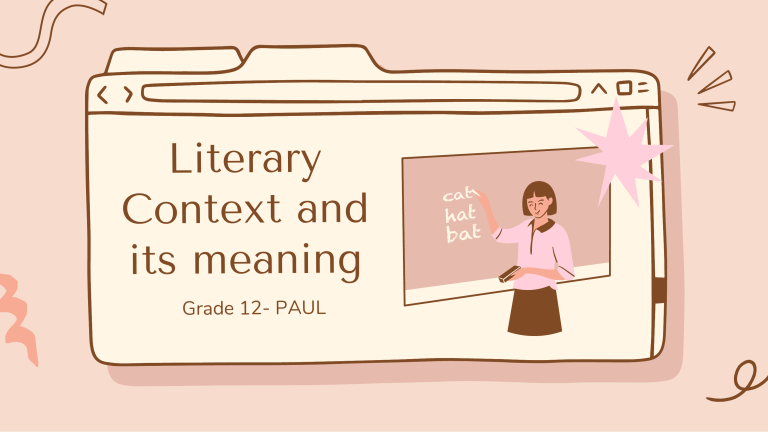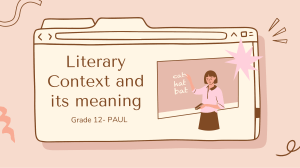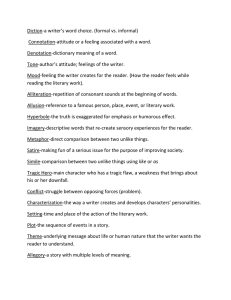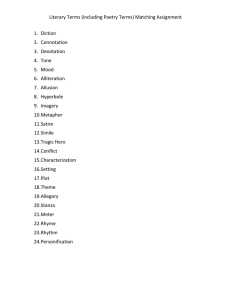
Literary Context and its meaning Grade 12- PAUL MELCS Discuss how different contexts enhance the text’s meaning and enrich the reader’s understanding. OBJECTIVES 1. Identify the words, ideas, structure, and purpose of the text; 2. Explore the different literary contexts to enhance and enrich the understanding of the text; Checking of Attendance WHAT IS A TEXT? A text is the written part of the story, what happens and what is stated on the page. It is everything you see that is not implied. What is CONTEXT It originates from the idead of weaving together, as in "textile". The New Oxford Dictionary defines context as "the circumstances that form the setting for an event, statement or idea, and in terms of which it can be fully understood and assessed'. Context refers to what goes with a text, rather than what is in it. It shapes the text. Understanding the TEXT Getting out of the text itself Deeper Understanding CONTEXT Appreciation of the TEXT Different Types of CONTEXT L A R U CULT T X E T N CO LINGUISTIC CONTEXT READER'S CONTEXT IDEOLOGICAL CONTEXT SOCIAL CONTEXT WRITER'S CONTEXT LINGUISTIC CONTEXT According to David Richter, "Practically everything we do is specifically human is expressed in language.". This is why literary texts can be read through the context of the language used to write the text as well as the way language is used in the text. LINGUISTIC CONTEXT Reading the text on its own regardless of the author's biography and sociocultural context, may help you understand the literary texts through analyzing the words sentences, patterns ,imagery of the of the text Analyzing the literary text grammar syntax for phonemic pattern may help you find the meaning of the text within its form and may help you interpret it basically the content CULTURAL CONTEXT Culture refers to a particular "way of life", involving religion, race and nationality, as well as things like food, dress code and manners. Culture can relate to art, music, writing and literature itself. Cultural context is especially important to note if the author is attempting to make a comment on an aspect of culture, or the clash of two cultures. HISTORICAL CONTEXT It is the broader cultural environment of a topic or piece, which includes how time affects the importance of something. It also includes politics, culture, religion, economics and societal norms. IDEOLOGICAL CONTEXT It refers to the systems of beliefs and ideas that underpin our attitudes and behaviour. Such ideology may be valued by society as a whole, or be the basis of conflict. It is a context that is in many ways 'invisible'. WRITER'S CONTEXT It is knowing about the writer's life, values, assumptions, gender, race, political and economic issues related to the author. READER'S CONTEXT It is about the reader's previous reading experience, values, assumptions, political and economic issues SOCIAL CONTEXT It is how people surrounding something affect and interpret something. It is concerned with people rather than culture in general It changes depending on who is involved Social class, religious affiliation and gender are a few factors that affect how people view something and build social context. When interpreting this type of context, the intended audience of a text or created work is an essential element that changes how the viewer should look at an item Thank You See You Next Time









